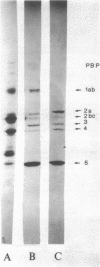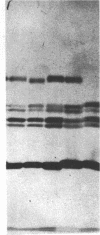Abstract
The penicillin-binding proteins (PBPs) from mutants of Bacillus subtilis were studied and related to morphology. In a previously described cloxacillin-resistant mutant of B. subtilis strain Porton, PBP 2a had an altered mobility by sodium dodecyl sulfate gel electrophoresis and was present in increased amounts. In addition, PBPs 1a and 1b were missing in this mutant. The only morphological change seen was a decrease in size of about 15%. Studies of two Triton-resistant morphological mutants of B. subtilis 168, Tr49 (small diameter) and Tr61 (helical form), revealed no change in the number of PBPs compared with that of the parent strain. However, PBPs 1a and 1b had an altered mobility in the mutant Tr49.
Full text
PDF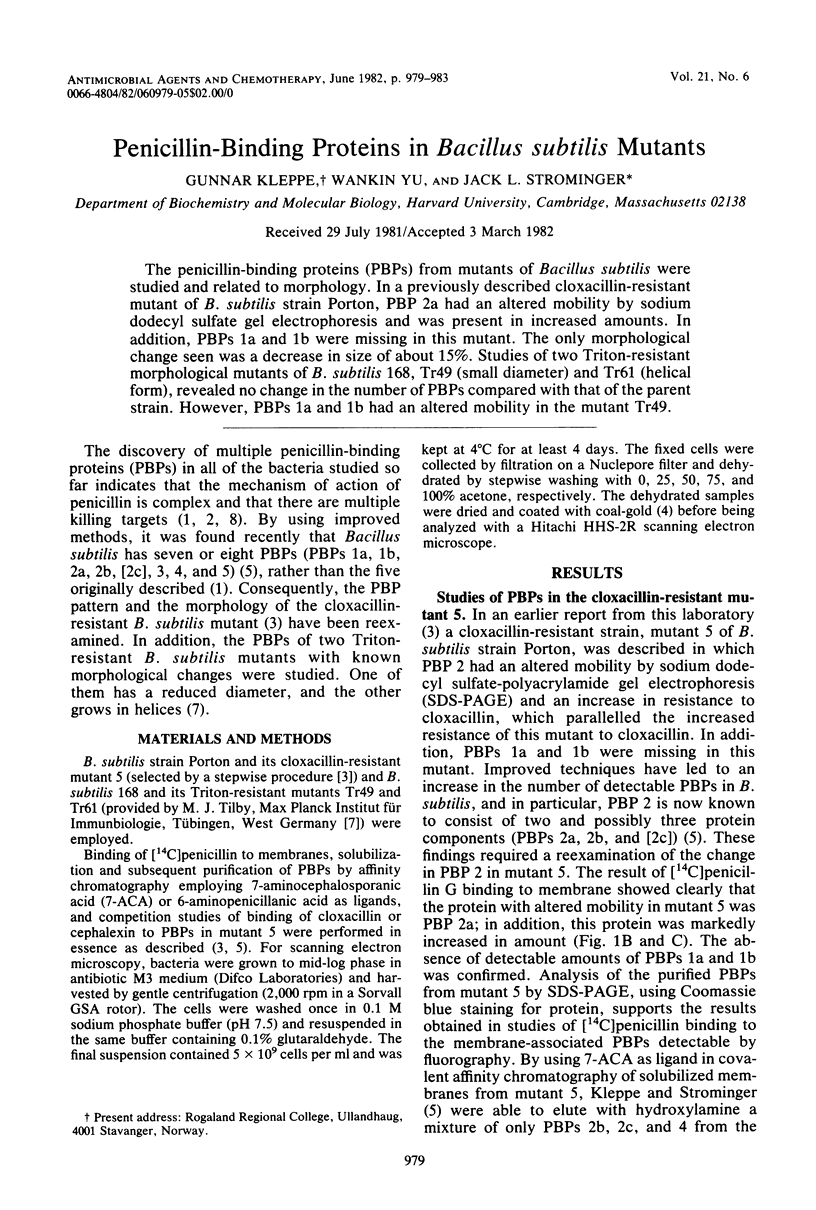
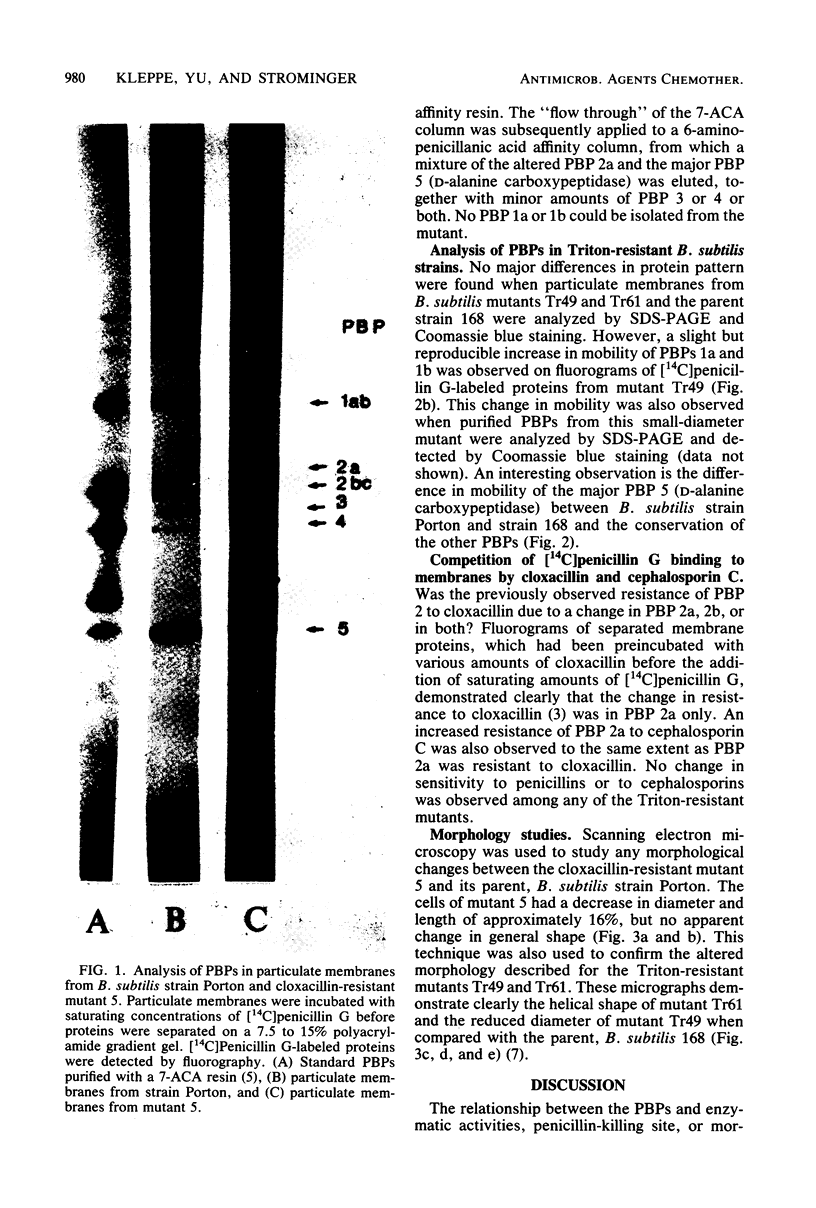

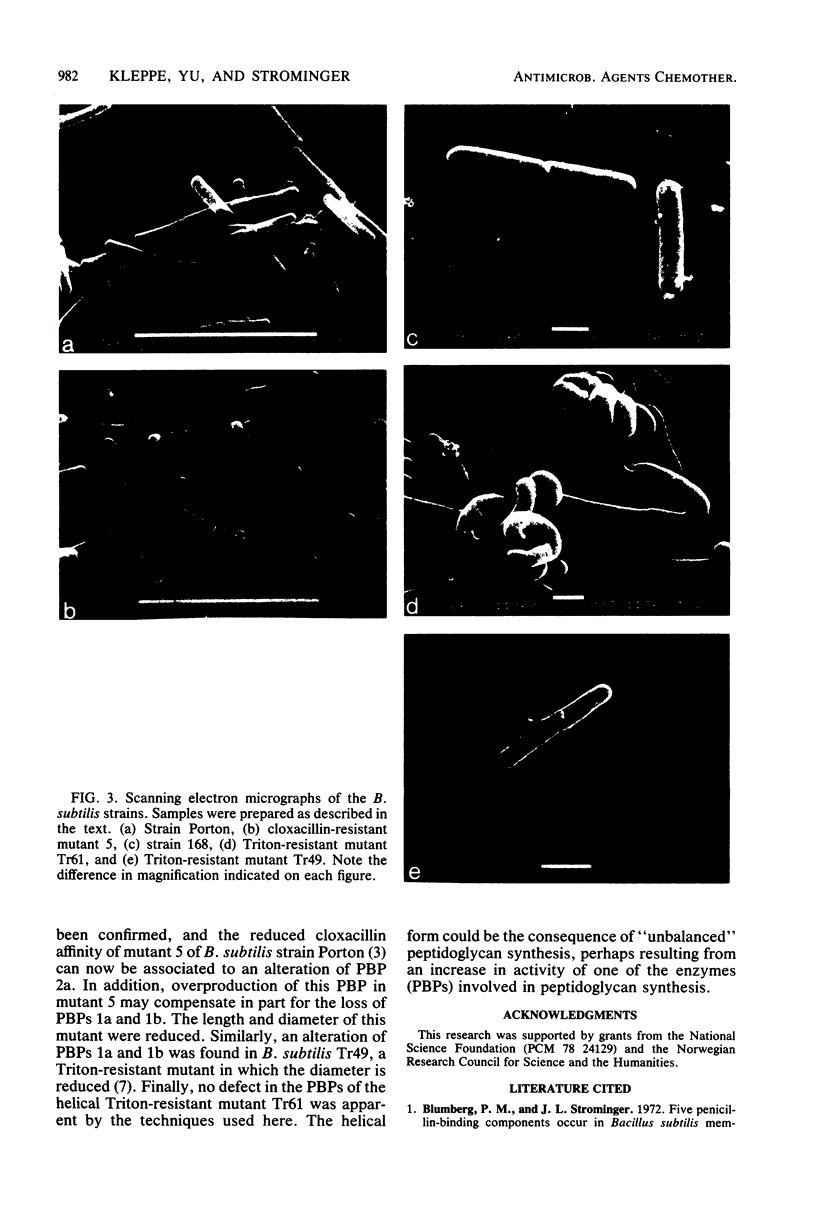
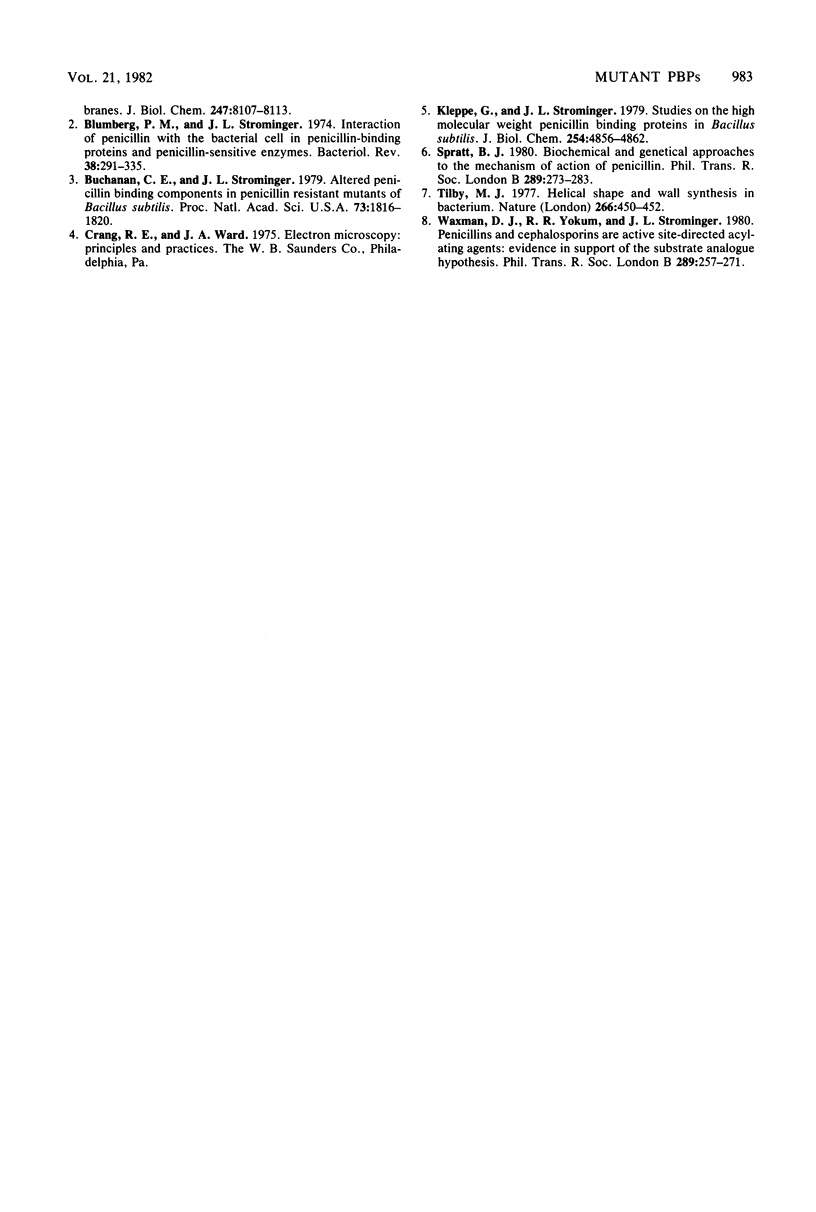
Images in this article
Selected References
These references are in PubMed. This may not be the complete list of references from this article.
- Blumberg P. M., Strominger J. L. Five penicillin-binding components occur in Bacillus subtilis membranes. J Biol Chem. 1972 Dec 25;247(24):8107–8113. [PubMed] [Google Scholar]
- Blumberg P. M., Strominger J. L. Interaction of penicillin with the bacterial cell: penicillin-binding proteins and penicillin-sensitive enzymes. Bacteriol Rev. 1974 Sep;38(3):291–335. doi: 10.1128/br.38.3.291-335.1974. [DOI] [PMC free article] [PubMed] [Google Scholar]
- Buchanan C. E., Strominger J. L. Altered penicillin-binding components in penicillin-resistant mutants of Bacillus subtilis. Proc Natl Acad Sci U S A. 1976 Jun;73(6):1816–1820. doi: 10.1073/pnas.73.6.1816. [DOI] [PMC free article] [PubMed] [Google Scholar]
- Kleppe G., Strominger J. L. Studies of the high molecular weight penicillin-binding proteins of Bacillus subtilis. J Biol Chem. 1979 Jun 10;254(11):4856–4862. [PubMed] [Google Scholar]
- Spratt B. G. Biochemical and genetical approaches to the mechanism of action of penicillin. Philos Trans R Soc Lond B Biol Sci. 1980 May 16;289(1036):273–283. doi: 10.1098/rstb.1980.0045. [DOI] [PubMed] [Google Scholar]
- Tilby M. J. Helical shape and wall synthesis in a bacterium. Nature. 1977 Mar 31;266(5601):450–452. doi: 10.1038/266450a0. [DOI] [PubMed] [Google Scholar]
- Waxman D. J., Yocum R. R., Strominger J. L. Penicillins and cephalosporins are active site-directed acylating agents: evidence in support of the substrate analogue hypothesis. Philos Trans R Soc Lond B Biol Sci. 1980 May 16;289(1036):257–271. doi: 10.1098/rstb.1980.0044. [DOI] [PubMed] [Google Scholar]



